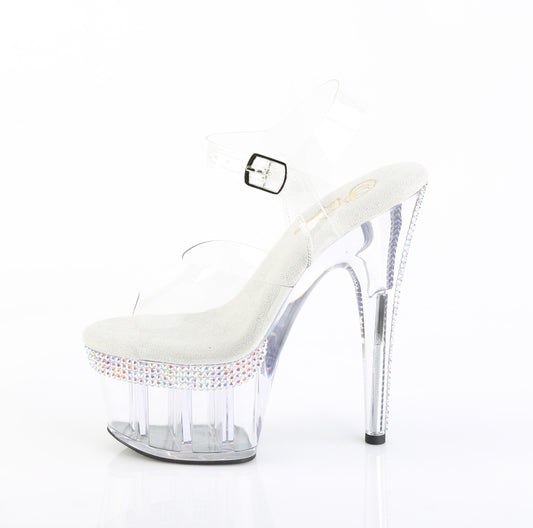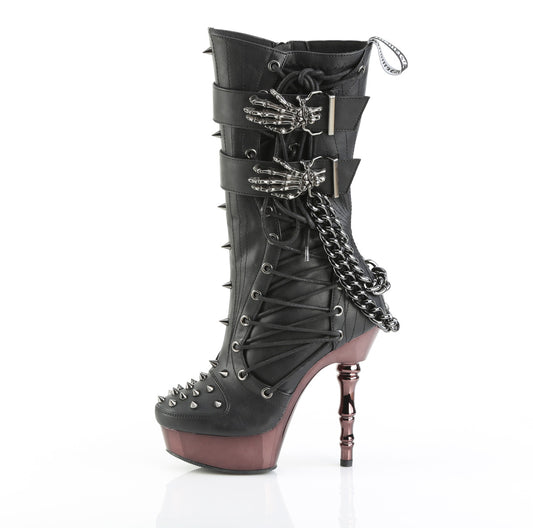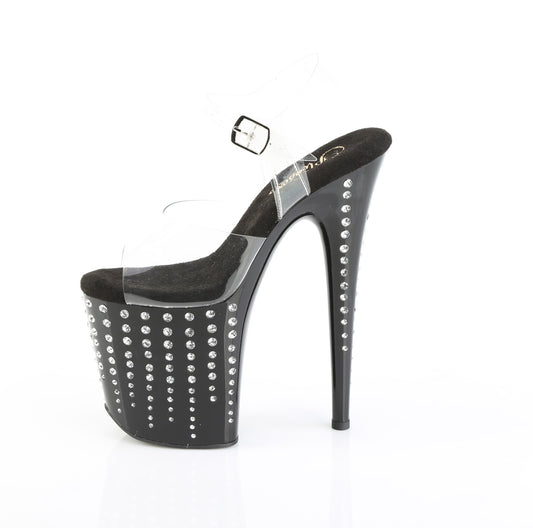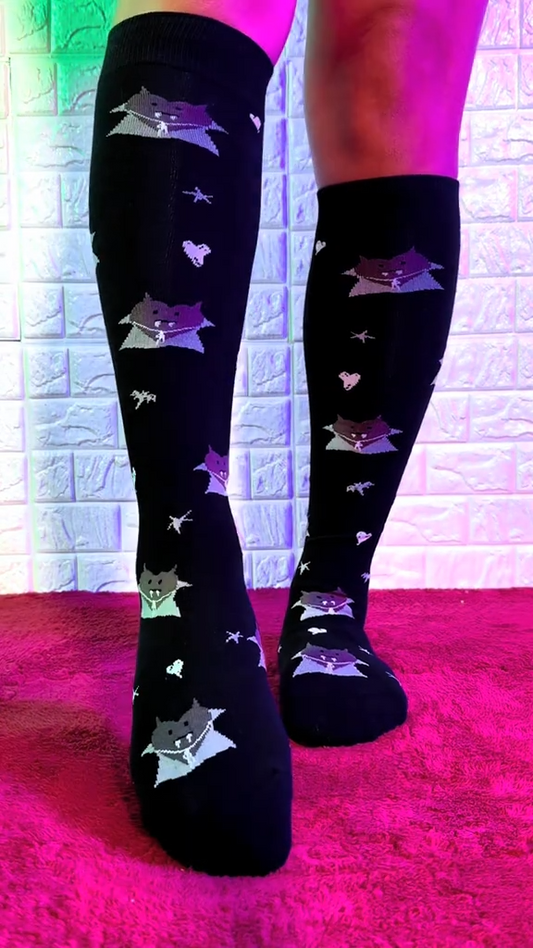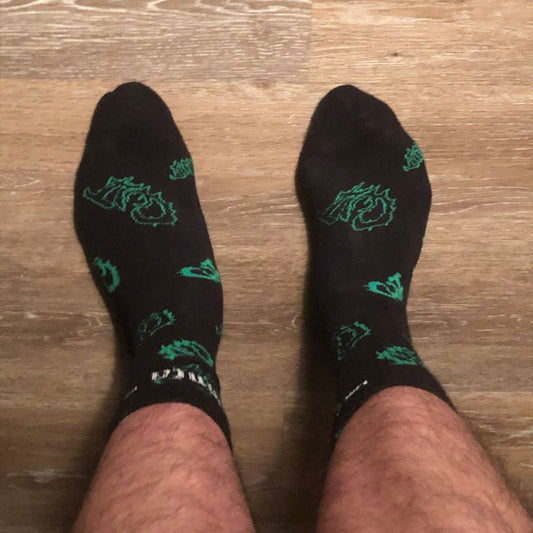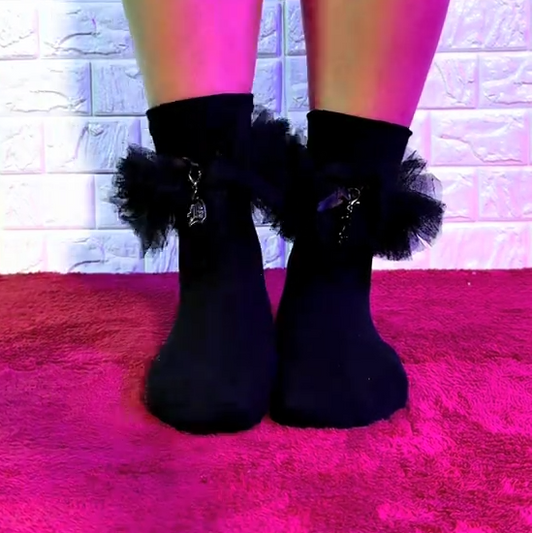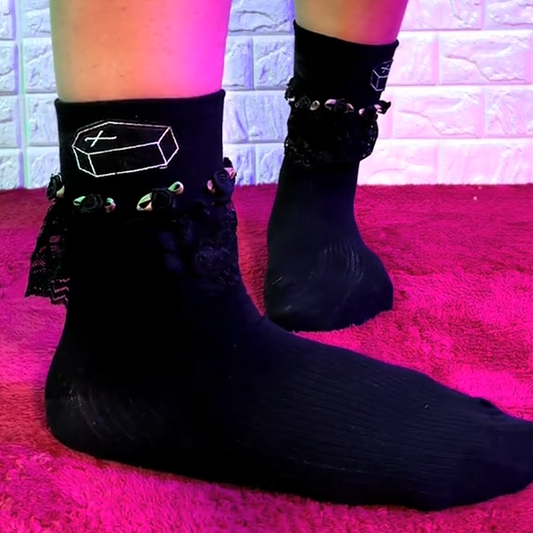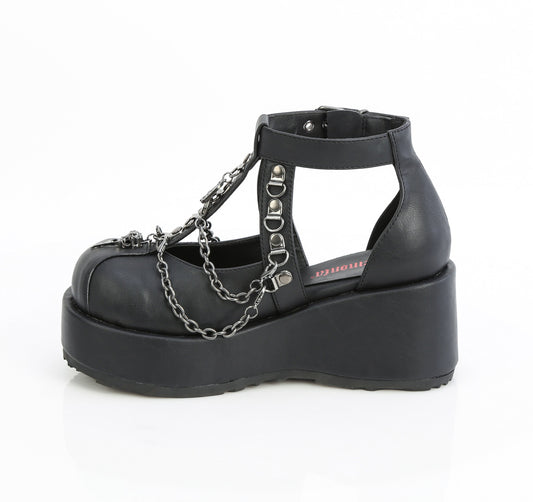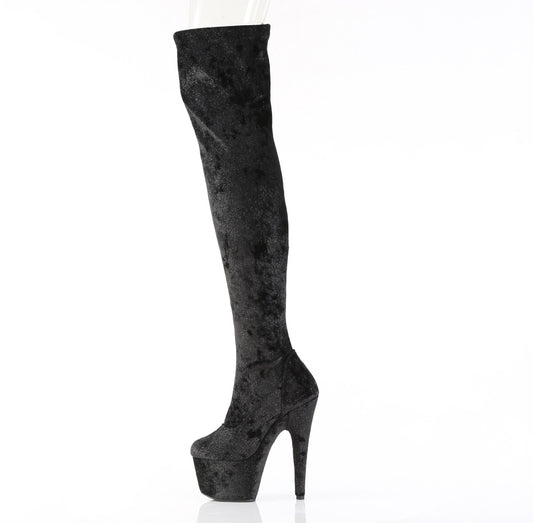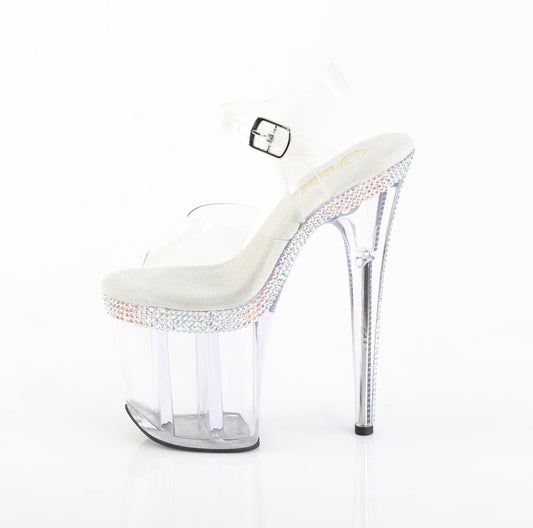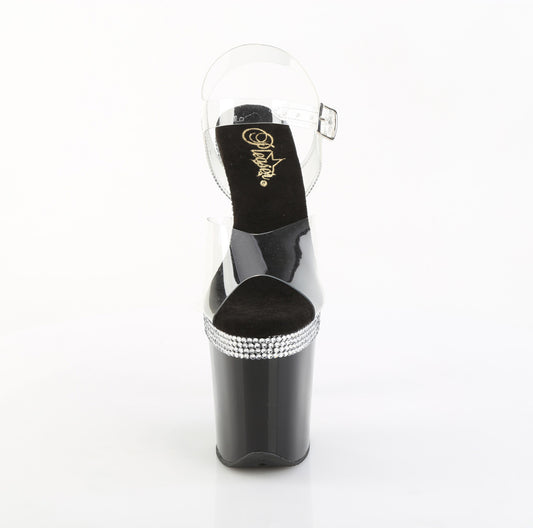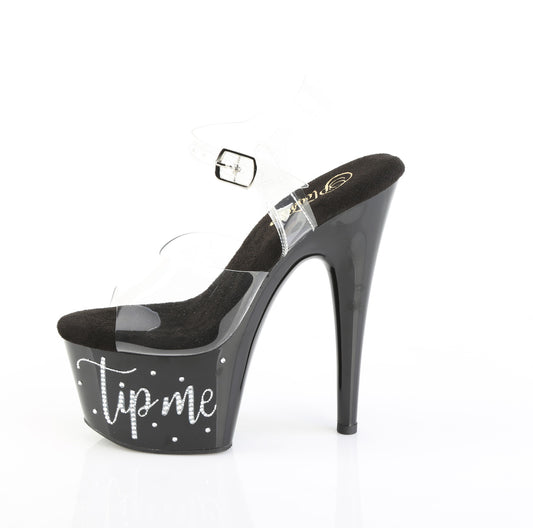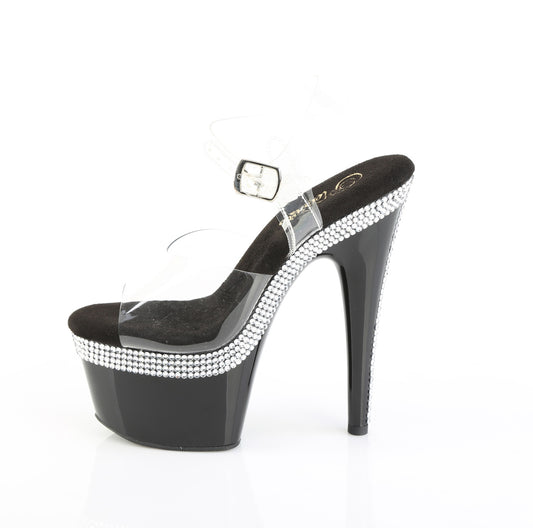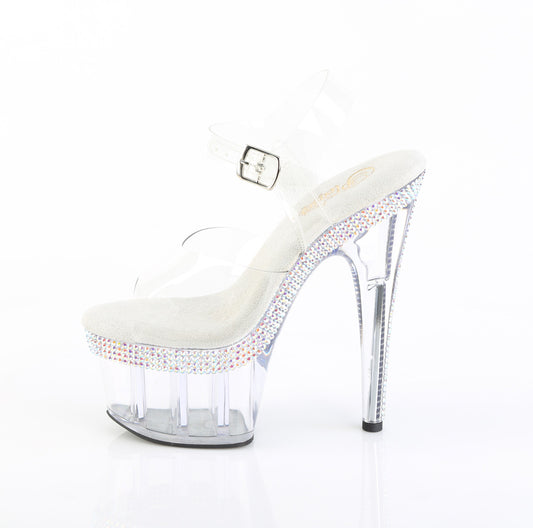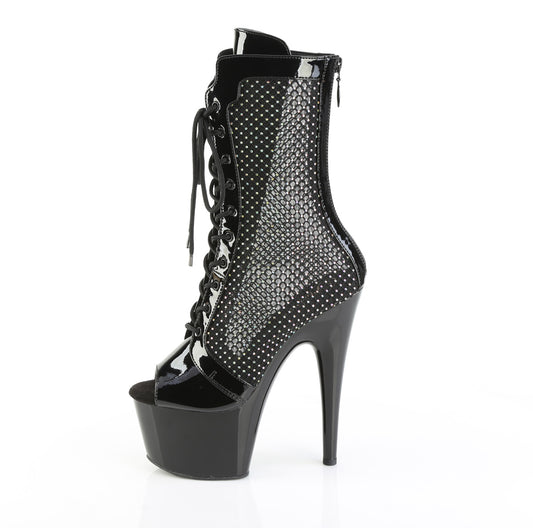
What do all those specifications for the shoes actually mean, and what can you do with them?
Share

Tip: You can click on the images below to enlarge them.
In this blog we give a brief explanation of the specifications that are stated with the shoes and what they actually mean.
We cover the next topics:
Read and learn more about the next specifications and topics here:
Heel height and platform height:
The heel height and platform height are the most important factors for many people when shopping for heels. When it comes to pole dancing/exotic dance/pole fitness on heels, we more often talk about the height in inches than the height in cm.
For your convenience, we mention the height in inches as well as in cm, so you don't have to convert this yourself :)
How we measure them:
Heel height (abbreviated "HH") |
Platform height (abbreviated "PF") |
|
The heel height is measured by Pleaser from where the heel touches the ground in a straight line upwards to where the heel touches the sole; as shown in the image below |
The platform height is measured from the bottom of the sole where it touches the ground to the top of the platform -> the height where your foot is standing on; as shown in the image below |
Walking height:
The walking height is the 'real' heel height you walk on. We calculate this with the next 'formula':
Heel height - Platform height = Walking height
-
For heels without a platform, the heel height is the same as the walking height because nothing is subtracted from the heel height
-
For heels with a platform, the 'real' heel height you walk on is less than the total heel height because your foot rests on a platform. That means the sole of the shoe has literally been raised and your foot is standing higher. You can therefore subtract the platform height from the heel height to calculate the walking height.
The following image shows an example:
Heel distance
The heel distance is the distance between the heel and the slope of the insole. A steeper heel has a shorter heel distance, a sharper slope angle and a 'lower' º-number (in degrees)
So: the shorter the heel distance, the higher the heel of the shoe feels/the steeper the shoe will bee.
Measuring the heel distance is actually best applied when you compare two different shoes in the same size and with the same walking/heel height.
So don't compare apples and oranges by comparing a size 36 with a size 40; a size 40 has a different heel distance than the same shoe in size 36 because a foot size 40 is bigger/longer, and the heel will therefore also be at a different distance/height than with size 36.
When comparing shoes, it is best to see whether the heel distance is the same or whether there is a difference. When using heel distance in an equation, the most important thing to keep in mind is the following rule::
- The shorter the heel distance, the higher/steeper the heel of the shoe feels
|
The following image shows an example of the influence of the heel distance.
|
 |
Summary:
If the heel distance is smaller, the slope is steeper and the angle of inclination is sharper. The heel of shoes with a smaller heel distance will therefore also feel higher.
The angle of inclination:
The angle of inclination is the angle created at the transition from the slope of the insole to the flat part of the insole. The steeper the heels are/the slope of the insole is, the sharper (smaller) that angle will be.
What we call the angle of inclination here is expressed in degreesº.
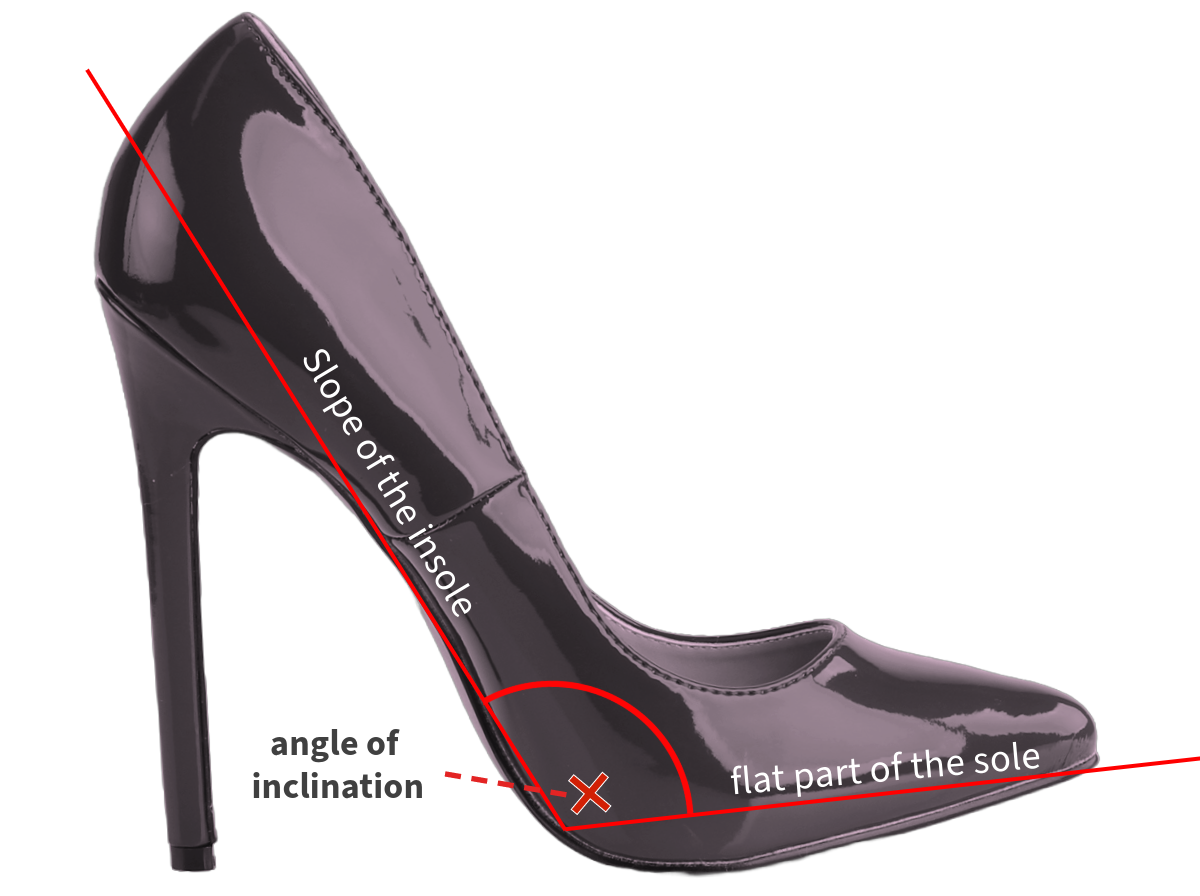
- The heel height, platform height, walking height and heel distance influence how steep the slope of the insole is, and therefore also influences the angle of inclination.
- For shoes without heels, there is no angle of inclination* because your foot is laying flat in the shoes
(*unless the front of the shoe moves upwards, in which case you actually create an angle just like with a heel, but upwards)
|
The higher the walking height/heel height and the shorter the heel distance, the sharper the angle that your foot makes will be. An acute angle has a smaller º-number than an obtuse angle or straight angle (see the image below) The heels we sell never have an inclination angle of less than 90º because the heel will then have to be placed diagonally, and we do not sell those types of shoes |
 |
The angle of inclination can be calculated by measuring from:Point 1) where the slope of the insole goes in a straight line to point 2) the transition from the slope to the flat part of the insole, and from point 2) to point 3) the front of the flat part of the insole Calculating the exact angle of inclination could be a bit more complicated to do at home, but by looking at how steep a slope is and how sharp the angle is at point 2) you can fairly well estimate how steep a shoe will be (best to compare it to another shoe). |
 |
|
In the image above, we have shown how the angle of inclination can be calculated, if you draw a line for the slope of the sole and for the flat part of the sole, for two different pumps with the same heel height, and for an ankle boot with a platform |
Why is it that your feet can hurt so much when wearing (steep) heels? |
Distribution of your weight when wearing heels:
Steep heels can eventually cause pain in your forefoot, this is because your weight is mainly carried by your forefoot. When you wear heels a lot and for a long time, your forefoot is put under excessive strain.
Fortunately, Pleaser takes our precious feet into account. Especially with the pole dancing/exotic shoes and the Bikini & Fitness Stage shoes, the heels are designed in such a way that the load on your (fore)foot is as minimal as possible (as far as this can be minimised), and you can wear very impressive heels for much longer! ❤︎
|
The next image clearly shows the distribution of weight when (not) wearing heels: As you can see in the image, the weight distribution shifts forward (towards your toes) as the heel height increases. Where your weight is evenly distributed in image A: 50% forefoot - 50% heel, the distribution in image C is completely the opposite: 90% forefoot - 10% heel. So it is not surprising that wearing heels for a long time can cause pain in your forefoot; it carries almost all the weight on a small surface. |
Want to try out how this works yourself? |
Stand on your toes and see what happens if you stand a little further up (the heel height increases) and lean a but forwards (the heel distance decreases)
|













